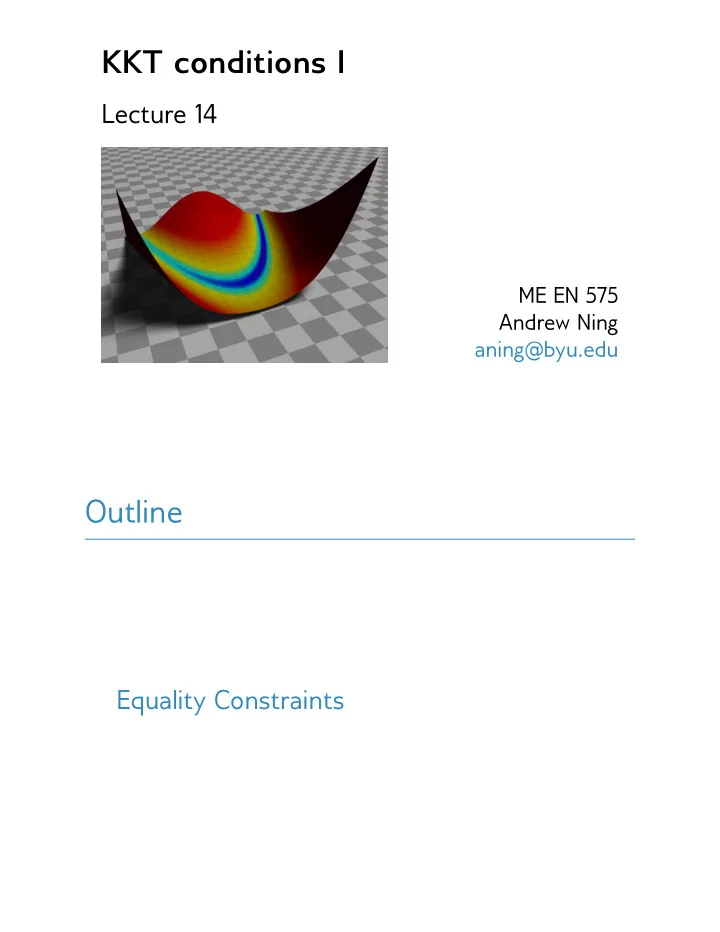

KKT conditions I Lecture 14 ME EN 575 Andrew Ning aning@byu.edu Outline Equality Constraints
minimize f ( x ) x ∈ R n with respect to subject to lb < x < ub ˆ c j ( x ) = 0 , j = 1 , . . . , ˆ m c k ( x ) ≤ 0 , k = 1 , . . . , m Equality Constraints
Motivating Problem: minimize x 1 + x 2 x 2 1 + x 2 2 = 8 subject to Small group exercise • What is the unconstrained optimum? • Draw the direction of the function gradient: ∇ f . • Rewrite the constraint in our convention. • Draw the direction(s) for the constraint gradients: ∇ c . • What is the constrained optimal solution and where is it located? • What do you notice about ∇ f and ∇ c at the optimum? Does that make sense? • How could you define the optimality criteria mathematically?
A More Formal Motivation
Define the Lagrangian L ( x, λ ) = f ( x ) + λ ˆ c ( x ) Extend to m constraints m ˆ ∂ ˆ ∂ L = ∂f c j ˆ � + λ j = 0 , ( i = 1 , . . . , n ) ∂x i ∂x i ∂x i j =1 ∂ L = ˆ c j = 0 , ( j = 1 , . . . , ˆ m ) . ∂ ˆ λ j
λ j is called a Lagrange multiplier, and there is a separate one for each constraint.
Recommend
More recommend